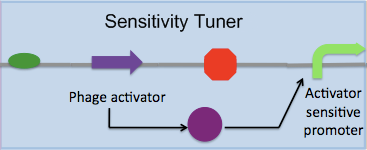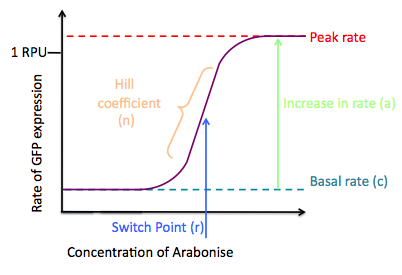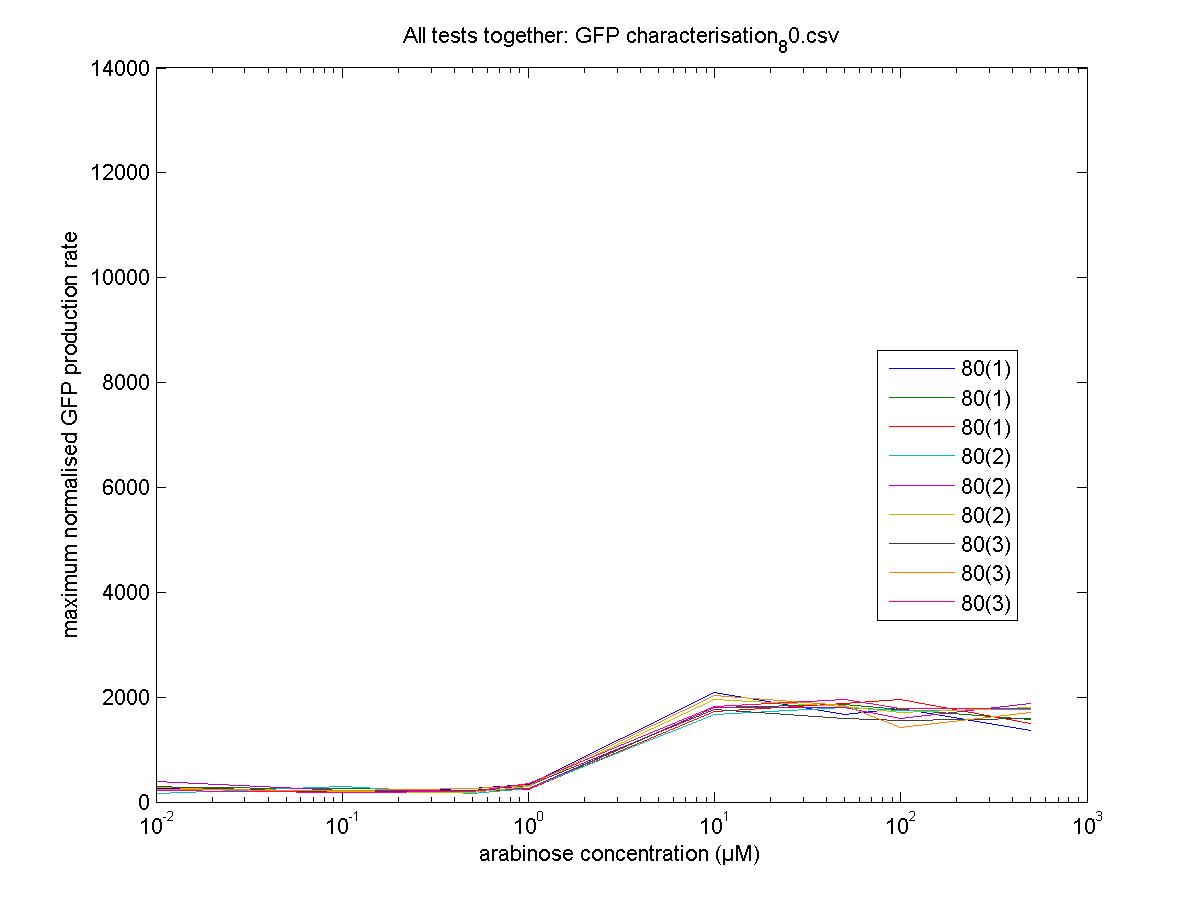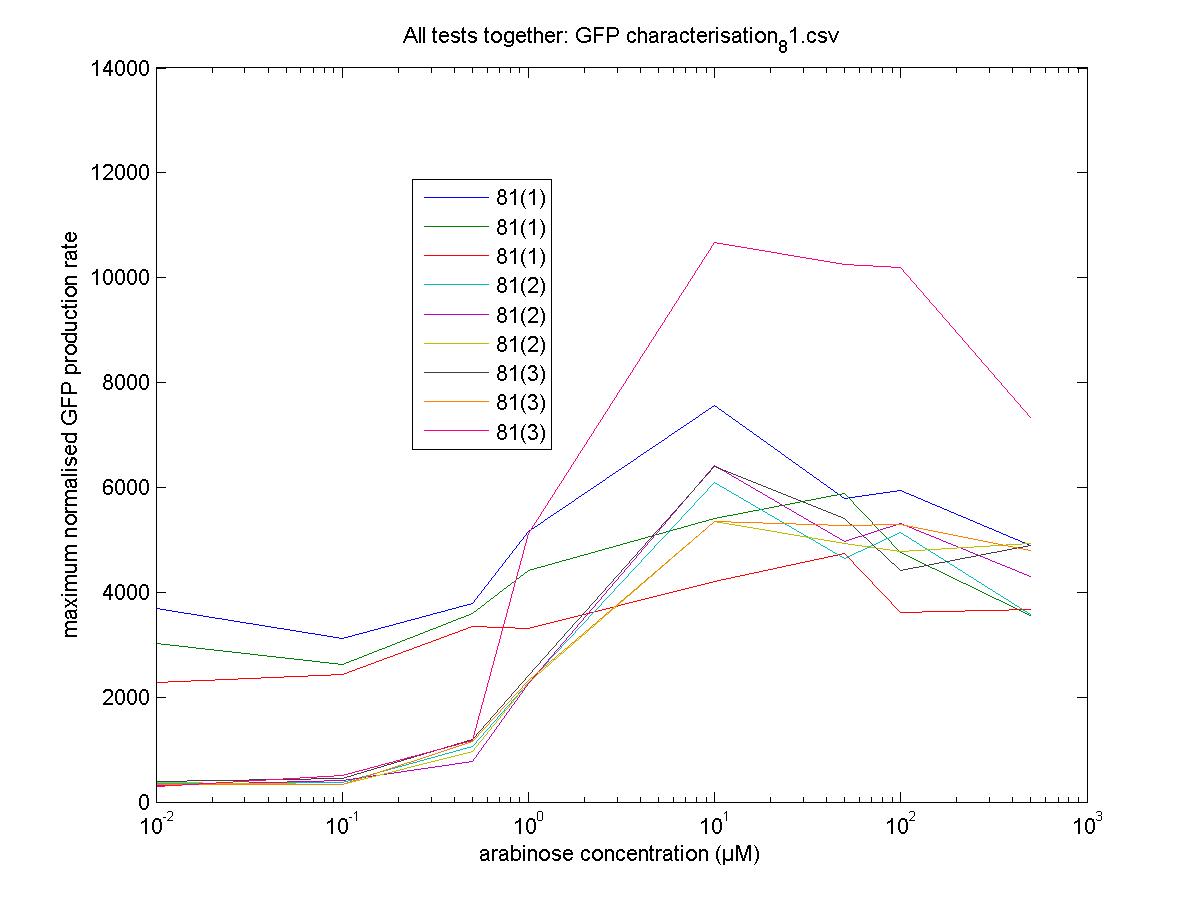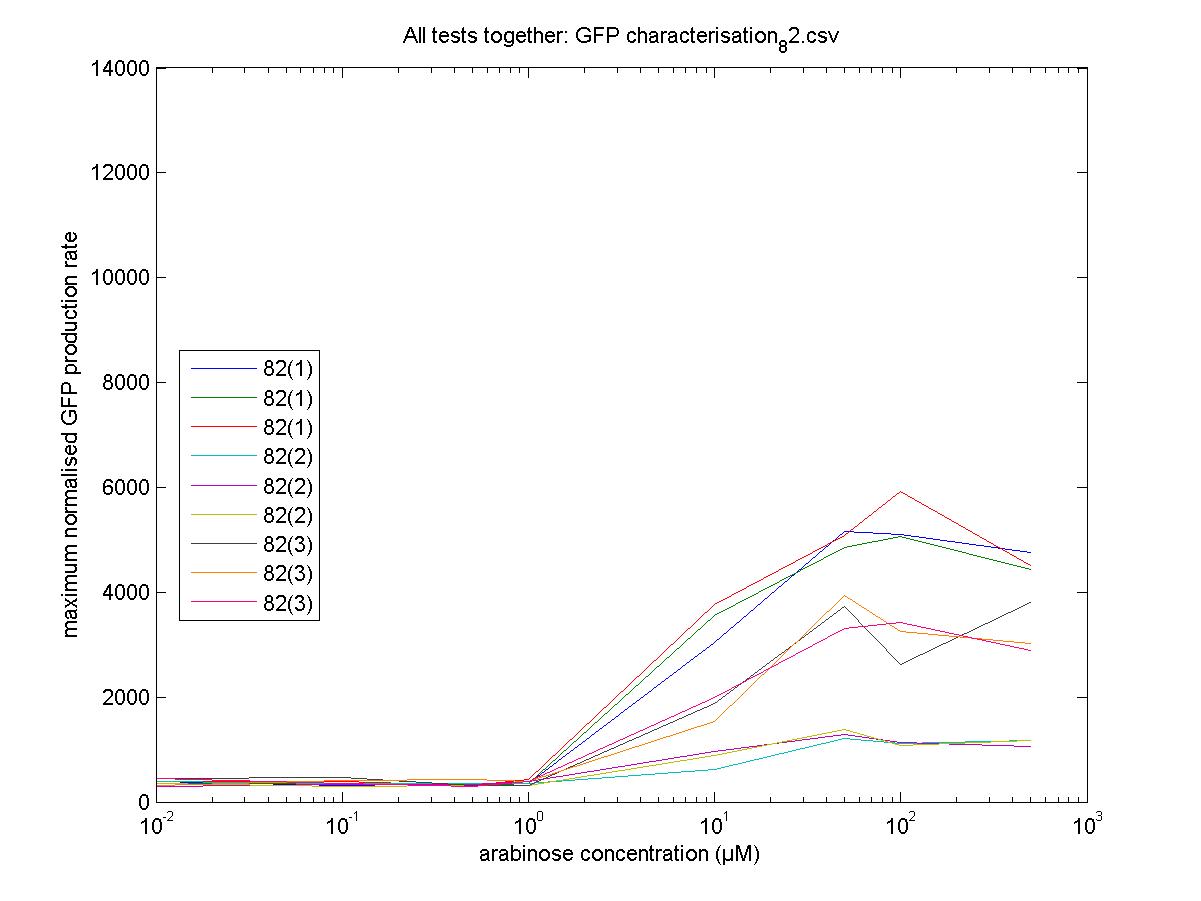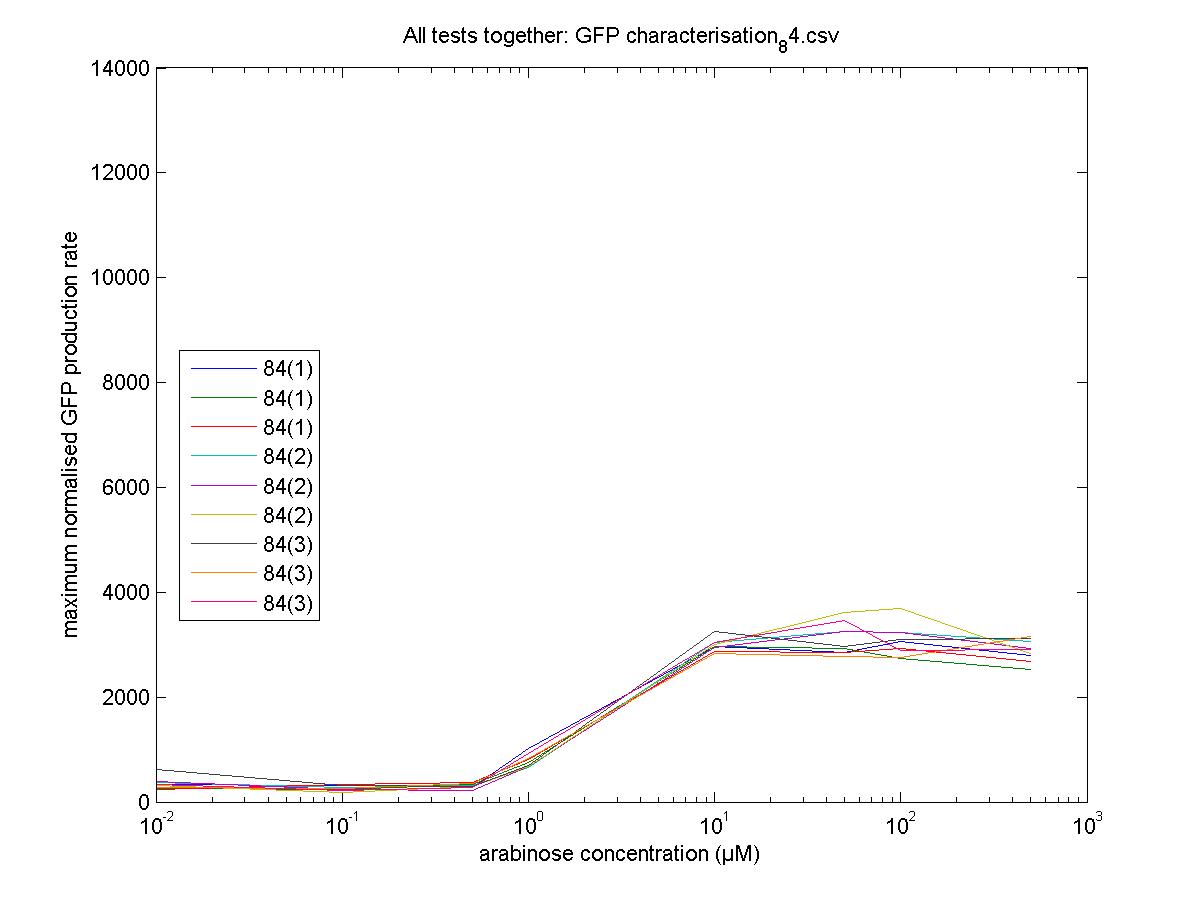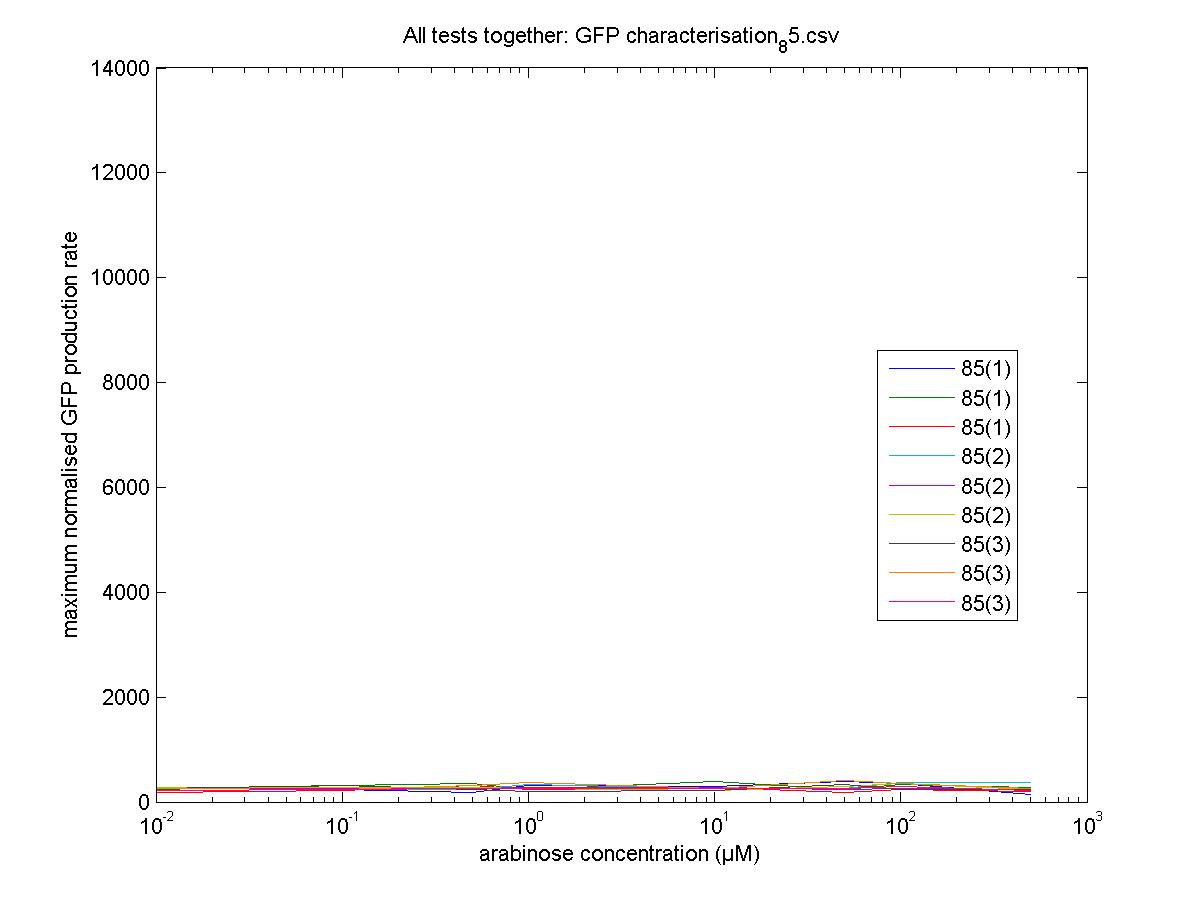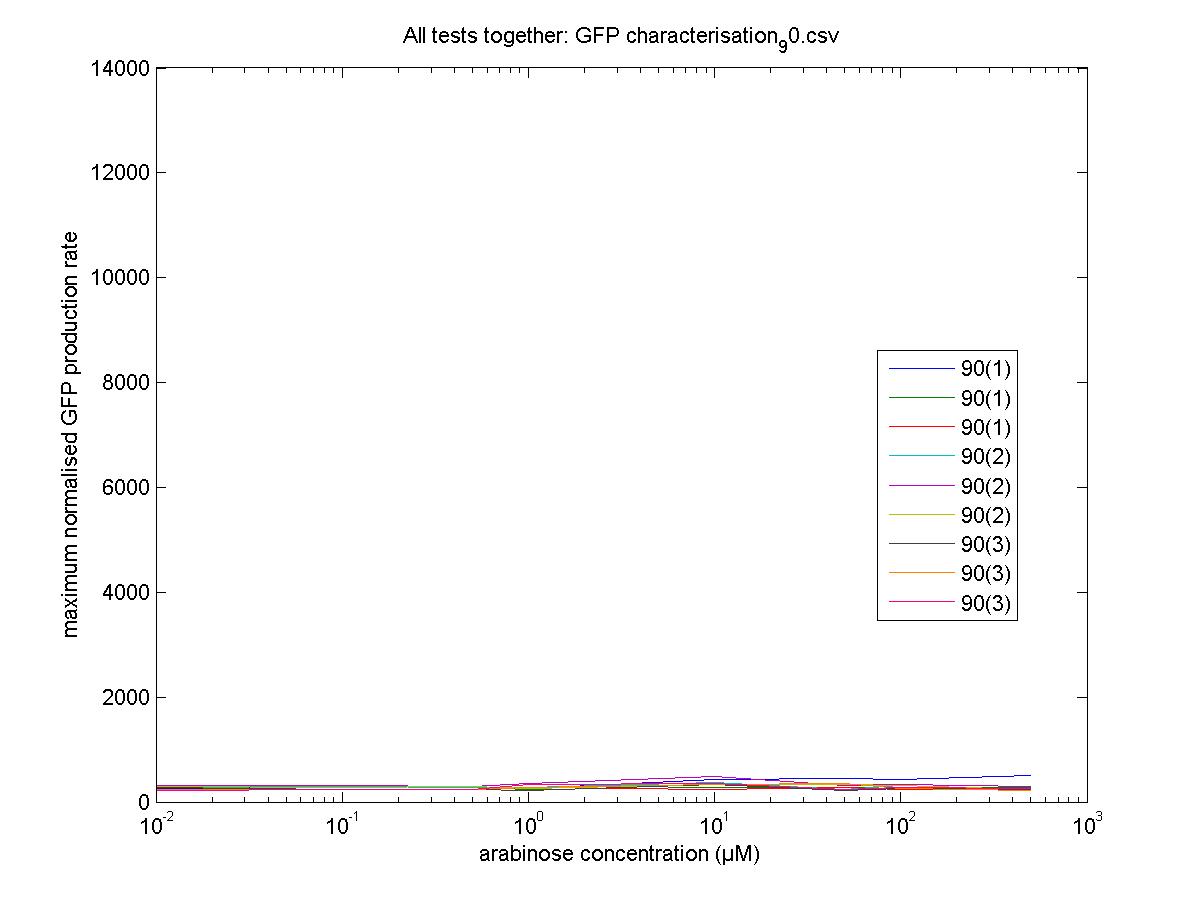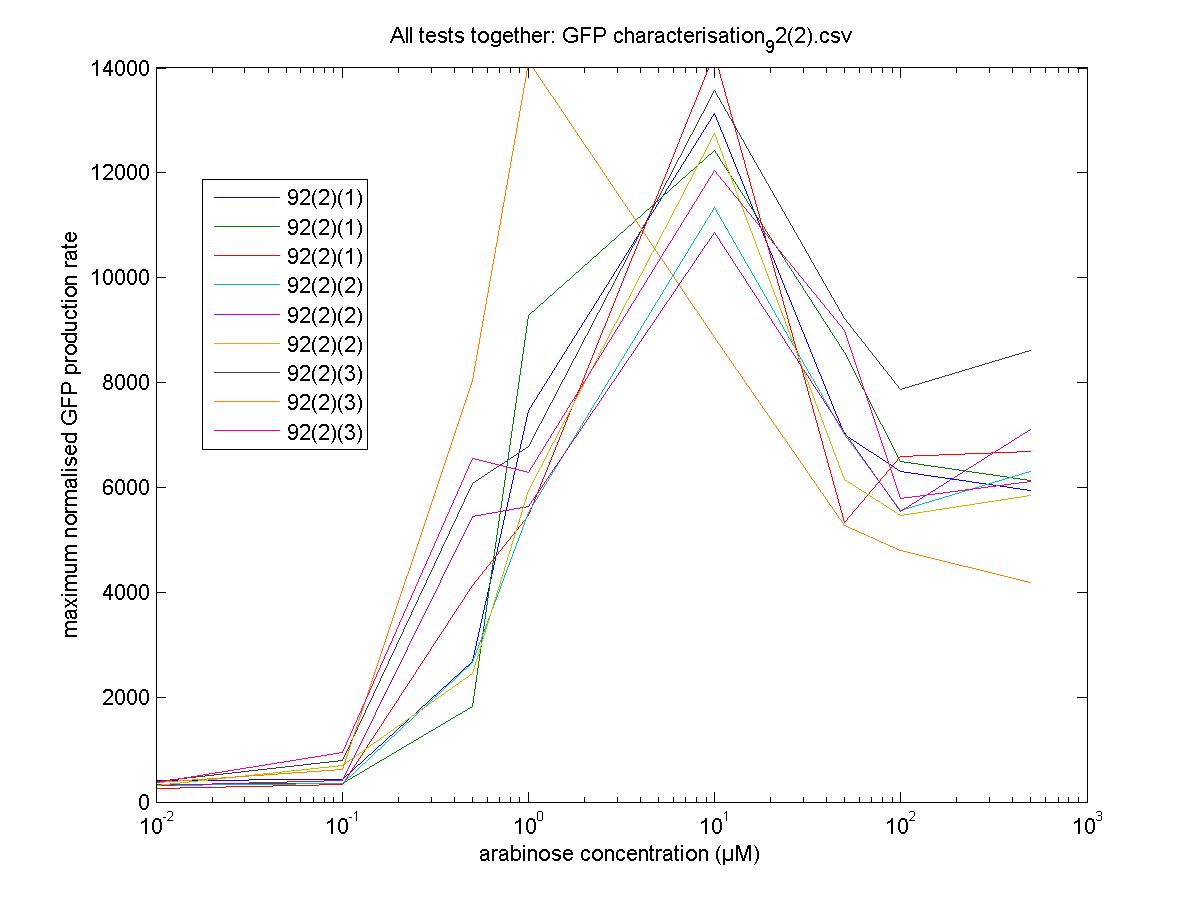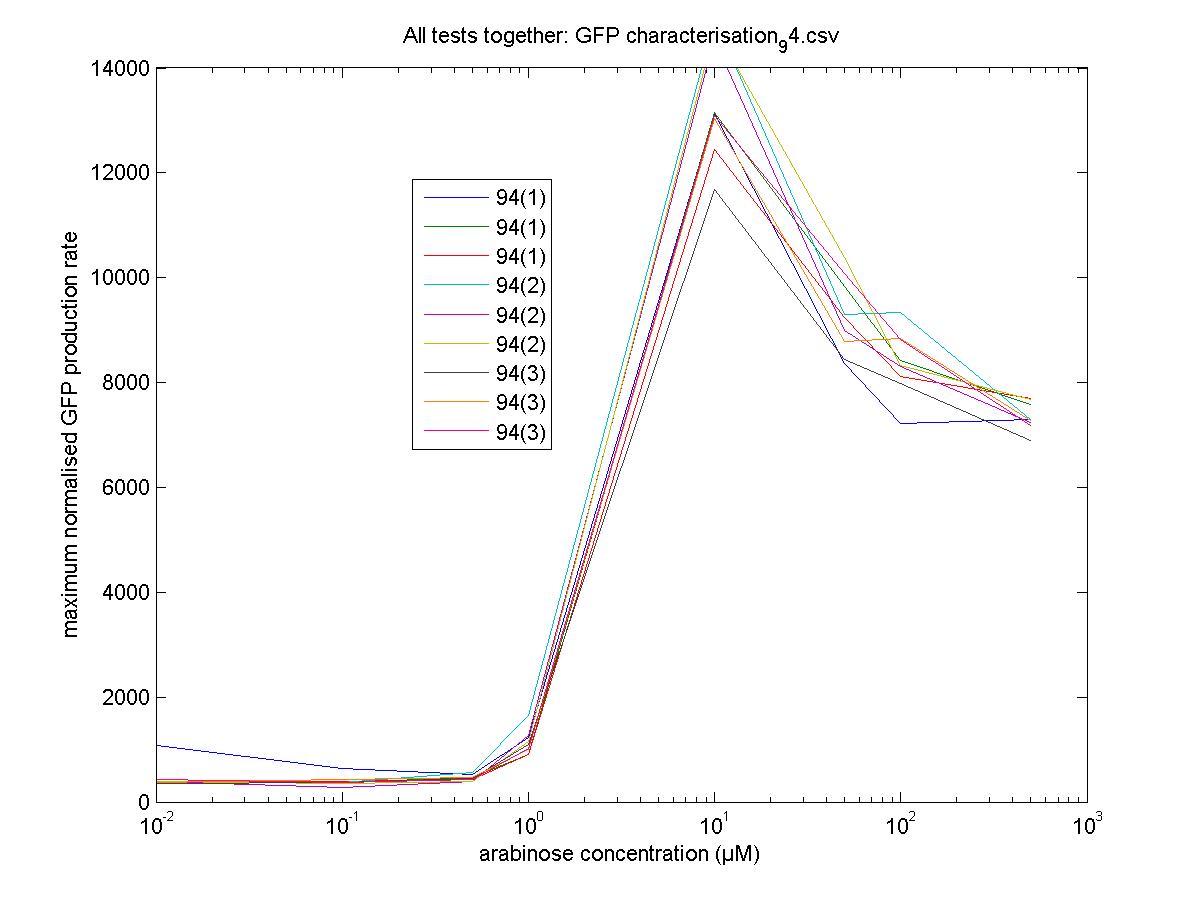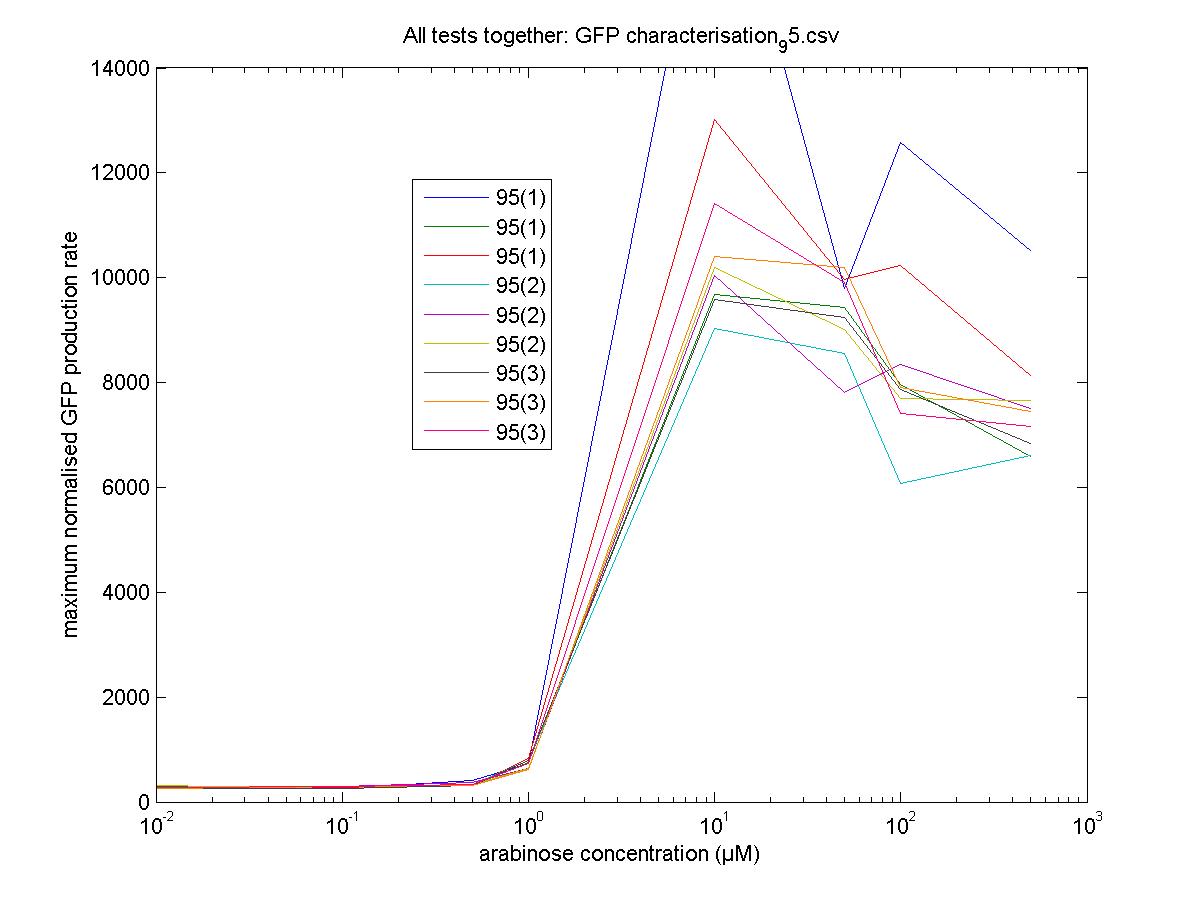Team:Cambridge/Project/Amplification/Characterisation
From 2009.igem.org
Categories :
Project :
-
Overview
Sensitivity Tuner
--- Characterisation
--- Modelling
Colour Generators
--- Carotenoids (Orange/Red)
--- Melanin (Brown)
--- Violacein (Purple/Green)
The Future
Safety
Notebook :
Team Logistics :
The Sensitivity Tuner
Introduction
The Cambridge 2007 iGEM team build 15 "amplifiers," constructs with RFP and GFP reporters that amplified the PoPS output of the promoter pBad/AraC (), as described below:
We re-designed these constructs to be PoPS converters as follows...
...and generated our own set of Sensitivity Tuners:
| P2 ogr activator | PSP3 pag activator | phiR73 delta activator | |
|---|---|---|---|
| PF promoter | |||
| PO promoter | |||
| PP promoter | |||
| Psid promoter | |||
| PLL promoter |
In order to characterize these phage activator/promoter constructs, we used the corresponding Cambridge 2007 amplifier as an illustration of how our Sensitivity Tuners alter the behaviour of pBad/AraC. These parts are very useful for characterisation as they contain fluorescent reporters; the parts we designed, which lack an input promoter and fluorescent reporters, are more useful parts for other iGEM teams to incorporate into their own projects.
Characterisation
For characterisation, we moved the Cambridge 2007 amplifiers onto a low copy plasmid in order to make meaningful comparisons with , the standard promoter. We looked at a few major characteristics relating input (arabinose) to output (GFP) and how they are modified compared to pBad/AraC on its own.
For our characterization assay, we transformed the E. coli strain BW27783 with the Cambridge 2007 amplifiers (biobricks summarised in the table below):
| P2 ogr activator | PSP3 pag activator | phiR73 delta activator | |
|---|---|---|---|
| PF promoter | |||
| PO promoter | |||
| PP promoter | |||
| Psid promoter | |||
| PLL promoter |
The BW27783 strain is ideal for assays using arabinose as it expresses arabinose transporters in the membrane constitutively (rather than in response to the detection of arabinose) and is unable to metabolise arabinose. We used a standard assay for each construct. We characterised cultures transformed with the amplifier constructs in exponential phase at the following arabinose concentrations: 0, 0.1, 0.5, 1, 10, 50, 100, and 500 uM. The controls that we ran for each assay included LB, untransformed BW27783, and J59691, the standard promoter. With the data we gathered, we were able to update the Registry pages of the Cambridge 2007 amplifiers, and also illustrated the ability of our Sensitivity Tuners to modulate the transcriptional system downstream of pBad/AraC.
Data
Maximum Rates against Arabinose Concentrations
| Construct | Increase in Rate, a (RPU) | Basal Rate, c (RPU) | Switch Point, k (uM) | Hill Coefficient, n |
|---|---|---|---|---|
| 1.256 | 76.49 | 2.18 | ||||
| 0.022 | 0.85 | 2.72 | ||||
| 0.039 | 0.92 | 2.89 | ||||
| 0.021 | 0.88 | 2.51 | ||||
| 0.032 | 0.95 | 2.71 | ||||
| 0.018 | 2.20 | 4.00 | ||||
| 0.118 | 1.05 | 2.45 | ||||
| 0.029 | 3.98 | 2.37 | ||||
| 0.018 | 1.46 | 3.96 | ||||
| 0.058 | 1.11 | 2.78 | ||||
| 0.040 | 0.35 | 2.26 | ||||
| 0.046 | 1.81 | 4.00 | ||||
| 0.040 | 1.91 | 4.00 |
80
81
82
84
85
90
92
94
95
 "
"

